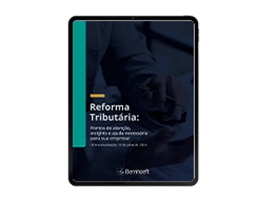Cumprimento das obrigações fiscais: a legislação tributária é complexa e está sujeita a mudanças frequentes. Uma consultoria tributária pode ajudar a garantir que a empresa esteja cumprindo corretamente suas obrigações fiscais, evitando problemas futuros e possíveis multas.
Reduzir a carga tributária: a consultoria tributária pode identificar créditos tributários não aproveitados ou pagamentos indevidos, possibilitando a recuperação de valores pagos a mais aos cofres públicos.
Planejamento tributário: a consultoria tributária pode auxiliar a empresa a estruturar suas operações de forma a reduzir a carga tributária, aproveitando benefícios fiscais e regimes especiais previstos na legislação.
Minimização de riscos fiscais: a consultoria tributária pode analisar as práticas fiscais da empresa para identificar possíveis riscos de autuação ou inconsistências, permitindo corrigi-las antes que se tornem problemas maiores.
Análise de cenários: com as informações corretas, a consultoria tributária pode avaliar os impactos fiscais de diferentes cenários, como aquisições, fusões ou expansão para novos mercados, ajudando a tomar decisões estratégicas com base nos aspectos tributários.
Atualização sobre mudanças na legislação: a legislação tributária está em constante evolução, e a consultoria tributária pode manter a empresa informada sobre alterações relevantes que possam afetar suas operações.
Resolução de questões tributárias complexas: quando ocorrem questões fiscais complexas, a consultoria pode ajudar a empresa a encontrar soluções adequadas, evitando disputas prolongadas com a administração tributária.
Esses são alguns exemplos de como uma empresa pode se beneficiar contratando uma consultoria tributária e o importante é entender que ela oferece às empresas uma visão especializada e estratégica dos aspectos fiscais, permitindo que elas alcancem maior eficiência, conformidade e economia na gestão dos seus tributos.
Isso é particularmente importante em um cenário empresarial onde a conformidade tributária e a otimização dos recursos são fundamentais para o sucesso e a sustentabilidade dos negócios.













